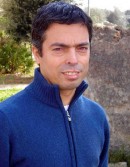

Plenary Lecture
Risk Considerations of Cave Stability in Soft Carbonate Rocks Using 3D Geophysical Methods

Professor Giovanni Leucci
Consiglio Nazionale delle Ricerche
Istituto per i Beni Archeologici e Monumentali
Italy
E-mail: g.leucci@ibam.cnr.it
Abstract: According to the Protection Civil Department database, Apulia is the fourth region in Italy affected by sinkholes, due to collapse of natural or mane-made cavities. The southern part of the region (the Salento peninsula) had hosted in the last twenty years at least fifteen events of sinkholes, the greatest part of which occurred inside “soft” carbonate rocks (calcarenites).
The man – made and/or natural cavities are sometime assets of historical and archaeological significance. Sometime monuments of historical and archaeological significance are located in areas with high risk of sinkholes. In spite of the importance on the civil protection, the prediction of the sinkhole events is currently an hard issue. This paper provide a new methodological approach on the evaluation of sinkhole hazard in such “soft” carbonate rocks combing geophysical and mine engineering complementary methods.
A case study is exposed which concern natural cavity named “Grotta delle Veneri”. In this case the approach was: i) 3D Ground-penetrating Radar (GPR) and Electrical Resistivity Tomography (ERT) in order to evidence the shape and dimension of karstic cave; ii) seismic refraction tomography in order to study the physical-mechanical characteristic of rock mass that constitute the roof of the cave; iii) the scaled span empirical analysis to instability evaluation of the crown pillar’s caves.
The research allows to define the geometrical cave shape (span, length and thickness of the cave’s roof) which related to the geological features and physics properties of the rocks, determine the instability of the roof’s cave and, as a consequence, the sinkhole hazard.
Brief Biography of the Speaker: After the Degree in Physics he has achieved the title of PhD in Geophysics for Environment and Territory.
He was assistant professor in the following Archaeological Geophysics, Applied Geophysics, Laboratory of Geophysics, Physics of the Earth, Geophysical data processing, Environmental Geophysics, Seismology at the Faculties of Sciences and Faculties of Cultural Heritage at the University of the Salento.
He collaborates to the summer school of "Geophysical Techniques for the Cultural Heritage", developing lessons on the acquisitions and processing of ground penetrating radar data.
He was Professor at the International Master in Urban and Territorial Diagnostic at the University of Salento Cagliari (Italy), Messina (Italy), Palermo (Italy), Pisa (Italy), Trieste (Italy), Atene (Greece), Barcellona (Spain), Buenos Aires (Argentina).
From 2003 He is in the list of the experts in Environmental Physics of the Italian Geophysical Association.
From 2003 He is referee of numerous international journals.
From 2006 He is inserted in the international scientific committee to arrange regulations for Geophysical Surveys.
From 2007 He is inserted in the scientific committee of the International Union of Geological Sciences of the UNESCO for the evaluation of the sites of historical and environmental interest.
From the a.a. 2007/08 He is Professor of Cartography and Topography at the Faculties of Science at the University of the Salento.
Currently it is researcher at the Institute for Archaeological and Monumental Heritage – National Council of Research (CNR-IBAM).
Experience in all aspects of exploration geophysics including: field operations; data reduction, processing, display, and interpretation; research and development.
Extensive knowledge and experience in all major surface, airborne, and borehole geophysical methods including: ground penetrating radar; refraction, reflection, and tomography seismics; electromagnetics; resistivity (Electrical Resistivity tomography) and induced polarization; gravity and magnetics.
Active participation to geophysical projects for groundwater, engineering, environmental remediation, hazardous waste, archaeology, and cultural heritage remediation.
Presentation of project results at technical international and national conferences, within peer-reviewed articles.